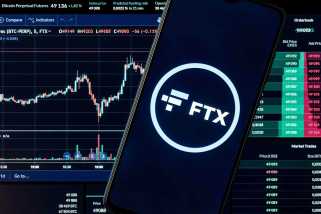
Cryptocurrency Prices Dip as Market Volatility Persists
The cryptocurrency market continues to experience turbulence, primarily driven by increased selling pressure and diminished demand. Significant digital assets including Avalanche (AVAX), Ethereum (ETH), Bitcoin (BTC), and Dogecoin (DOGE) are all facing downward trends, influenced by technical indicators and macroeconomic events.
Avalanche (AVAX) Price Analysis
AVAX has plummeted by 28.70% within the past month, falling below the $30 threshold. Currently trading at $25, AVAX has not reached this level since November 6, 2024. Technical indicators suggest that the decline may not be complete.
The daily chart for AVAX indicates that the support zone at $27 has been breached. This level previously acted as a catalyst for AVAX's ascent to $50. However, relentless selling pressure has eroded this critical support. The Money Flow Index (MFI) further highlights waning buying interest, remaining below the 50 mark, signaling low capital inflow and reduced recovery potential.
Ethereum (ETH), Bitcoin (BTC), and Dogecoin (DOGE) Price Analysis
Ethereum is encountering resistance as it struggles to stay above $2,600. After trading north of $3,000 in January, ETH has witnessed a gradual decline since February. Technical indicators reveal that $2,500 represents a critical support level, and if it is lost, a drop to $2,000 may be on the horizon. Conversely, if ETH can retake $2,700, a reversal in market sentiment could ensue.
Bitcoin is facing selling pressure following Federal Reserve Chair Jerome Powell's remarks indicating that interest rate cuts are not imminent. BTC is hovering around $95,000, with a potential downside risk toward $90,000. Sustaining the price above $96,000 could mitigate further losses in the near term.
Dogecoin has displayed volatility recently. After touching $0.203 last week, DOGE has found some stability at $0.254, experiencing both minor gains and losses throughout the week. Technical indicators suggest that short-term rallies for DOGE may be limited. However, the $0.269 level remains a key resistance point to monitor.


 suncrypto.in
suncrypto.in DogeHome
DogeHome Cryptos Newss
Cryptos Newss Optimisus
Optimisus Thecoinrepublic.com
Thecoinrepublic.com






















